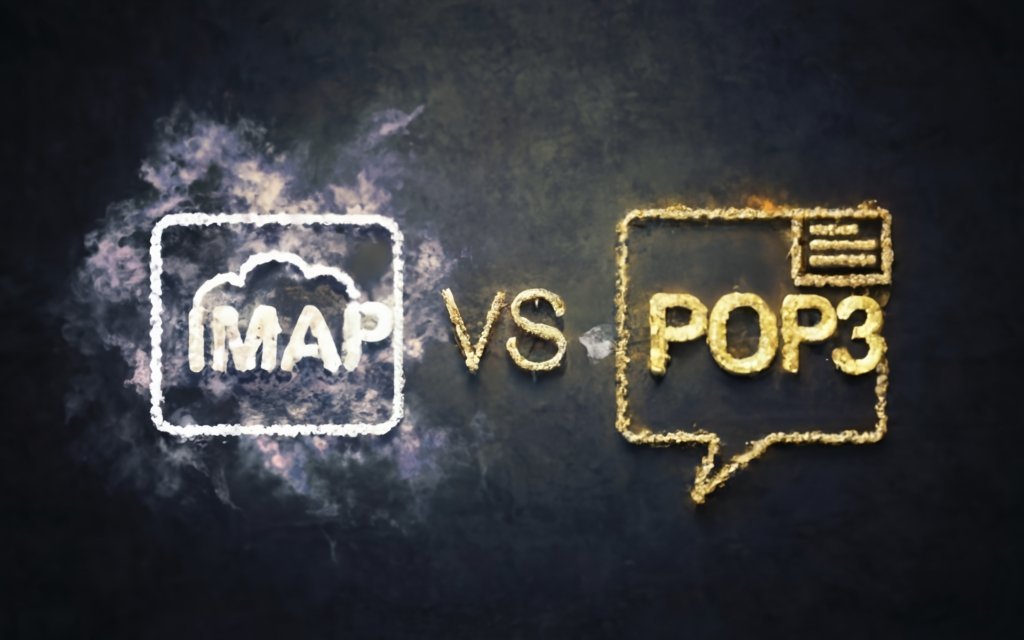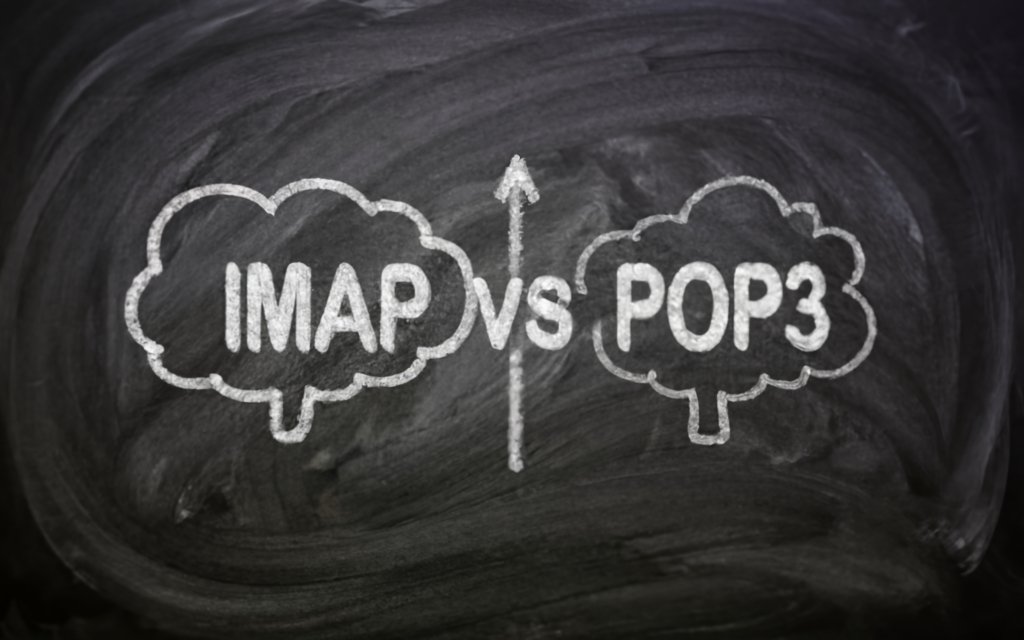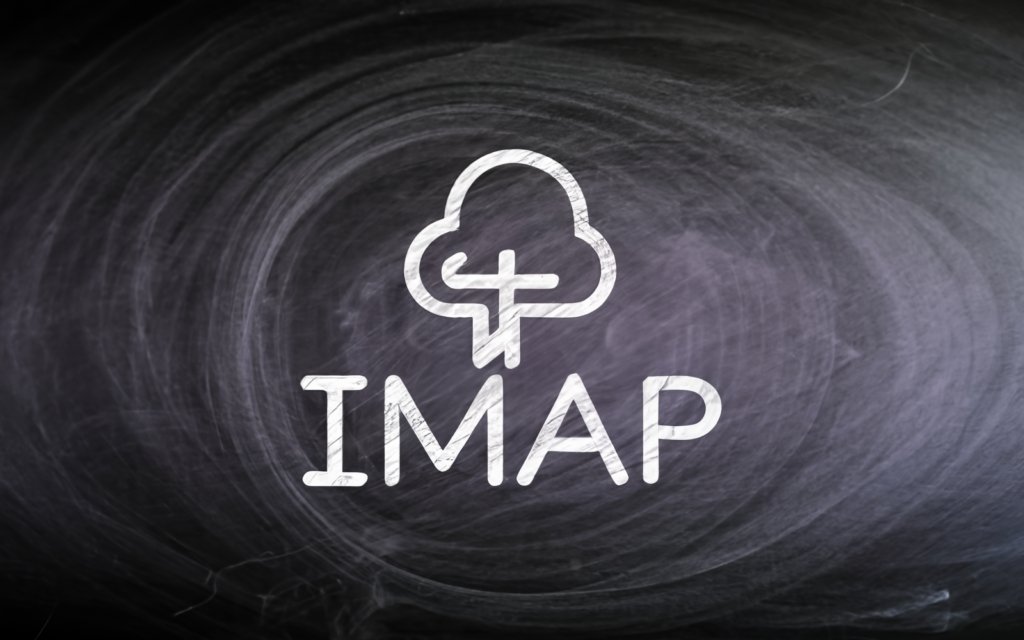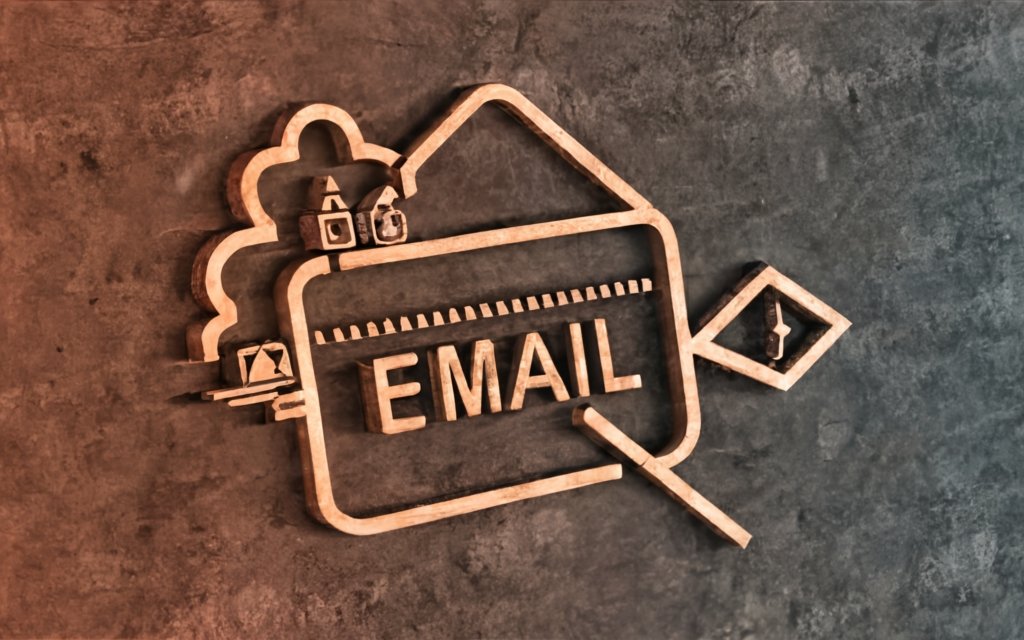Can’t get your Network Solutions email to sync properly across devices? End the frustration with this definitive IMAP setup guide. Learn how to configure any client for smooth Network Solutions access on mobile, desktop, or the web.
Overview of IMAP and POP3 Protocols for Email
What is IMAP?
IMAP (Internet Message Access Protocol) is an email protocol that allows you to access and manage messages stored on a remote email server. Unlike POP3 which downloads messages to your local device, IMAP keeps all your emails on the server so you can access them from multiple devices and clients.
Some key features of IMAP include:
- Keeps all messages on the server rather than downloading them. This allows access across multiple devices.
- Supports server-side searches and advanced filtering of messages. You can search through your emails on the server rather than downloading everything locally first.
- Synchronization of state across clients – deletions, reads, drafts etc are synced across devices.
- Managing folders remotely – you can create, rename, delete folders on the server from any IMAP client.
- Partial message fetch – you can download just the message header or a portion of its body which saves bandwidth.
- Supports multiple clients connected to the same mailbox simultaneously.
So in summary, IMAP provides remote access to your mailbox allowing you to manage it from multiple places. It’s ideal if you need to access the same email account across your phone, tablet, PC etc.
What is POP3?
POP3 (Post Office Protocol Version 3) is another common email protocol used to retrieve messages from a remote server. Here are some key characteristics:
- It downloads all new messages to a local mail client and usually deletes them from the server after.
- Each POP3 client manages its own copy of messages. No syncing across devices.
- Minimal remote mailbox management features. POP3 can’t create server folders remotely.
- Designed for a single client to connect and download email. Not ideal for access across multiple devices and apps.
So in essence, POP3 is designed for a “download and delete” workflow. It will grab your newest emails via your mail client, removing them from the server, with minimal remote management of your mailbox.
POP3 is best suited for users with a single device that want to download emails locally. The emails are removed from the server and live only on your local computer.
Major Differences Between IMAP and POP3
To recap, the major differences between the two main email protocols are:
- Message Storage: POP3 downloads to local device and deletes from server, IMAP keeps all messages on remote server
- Multiple Device Access: IMAP supports simultaneous multi-client access and synchronization. POP3 does not.
- Remote Mailbox Management: IMAP allows full management of mailbox on server – folders, flags etc. POP3 has minimal functionality.
- Bandwidth Use: IMAP only downloads message headers/partial content by default. POP3 downloads entire messages and attachments.
- Offline Access: POP3 allows offline access to downloaded messages. IMAP requires connectivity to server.
So to summarize:
- POP3 is good for offline access from a single device.
- IMAP fits multi-device access and remote mailbox management across apps and devices.
Which one you choose depends on your specific access needs. If you only use one device and want offline access, POP3 may fit your workflow better. If you need to manage one mailbox across many devices, IMAP is likely the better choice.
Most modern mail services and clients support both protocols. On Network Solutions you can enable and configure settings for either POP3 or IMAP access depending on your preferences. We’ll cover the steps for setting up Network Solutions IMAP later in this guide.
Hopefully this gives you a solid understanding of how POP3 and IMAP differ at a high level. Now let’s look at configuring IMAP settings specifically for Network Solutions email accounts.

Default IMAP and POP3 Ports and Encryption
Now that we’ve covered the core differences between POP3 and IMAP, let’s look at the common ports used by each protocol. Understanding the ports will help ensure your mail client is configured properly.
Common IMAP Ports
IMAP primarily uses two ports:
- 143 – This is the default non-encrypted IMAP port. Any connection on port 143 will be in plaintext.
- 993 – This is the default encrypted IMAP port that connects over SSL/TLS.
Some other less common IMAP ports include:
- 220 – An older unencrypted IMAP port used prior to 143 becoming the standard.
- 585 – Submission port that supports IMAP along with SMTP. May require STARTTLS for encryption.
So in summary, for modern IMAP you’ll mainly be using ports 143 and 993 – one unencrypted and one for SSL/TLS encrypted connections.
Common POP3 Ports
Like IMAP, POP3 also has a standard unencrypted and encrypted port:
- 110 – Default POP3 port for unencrypted connections.
- 995 – Default POP3 port over SSL/TLS encryption.
And some other less common POP3 ports:
- 109 – Older unencrypted version used before 110 became standard.
- 465 – Alternative secure POP3 port that uses implicit SSL.
So for POP3, ports 110 and 995 are the main ones to remember.
POP3 vs IMAP – Which Should You Use?
Should you use POP3 or IMAP though for your Network Solutions email? Here are a few general guidelines:
- If you only access email from one device – Use POP3. The download and delete model works fine if you only need access on a single computer.
- If you need access across multiple devices – Use IMAP. It will sync reads, deletions, folders etc across devices.
- If you need to manage mail remotely – Use IMAP. POP3 has very limited remote management capabilities.
- If you want offline access to messages – Consider POP3. The local copy stays accessible without connectivity.
- If you send and receive large attachments – IMAP may be better. It allows partial download of message bodies.
So think about your specific access patterns. For most modern cases, IMAP is likely the best fit to give you maximum flexibility across devices and full remote access.
For Network Solutions, you can enable both POP3 and IMAP if you want to experiment. But IMAP is generally recommended, especially if accessing email across multiple devices and clients.
Now that you know the standard ports, let’s walk through configuring IMAP access for Network Solutions step-by-step.

Step-by-Step Guide to Configuring Network Solutions IMAP Settings
Ready to setup IMAP access for your Network Solutions email account? Follow this step-by-step guide to get everything configured properly:
Log into Your Network Solutions Account
First, you’ll want to login to your Network Solutions control panel:
- Go to mail.yourdomain.com and replace “yourdomain” with your actual domain name.
- Enter your full Network Solutions email address as the username.
- Enter your account password and click Login.
This will bring you to your webmail inbox and control panel.
Check Current Email Client Settings
Before making any changes, it’s good to check what settings your email clients are currently using.
On your computer, phone, or tablet, look under the account settings of your email app for:
- Incoming mail server – This is the IMAP or POP3 server hostname.
- Outgoing mail server – The SMTP server used for sending email.
- Encryption method – SSL, TLS, or None.
- Server port numbers
Note these down so you can refer back to them later. Chances are your client is already configured for IMAP access but it’s good to verify.
Update Incoming and Outgoing Server Settings for IMAP
Now you’re ready to point your email client to the proper Network Solutions IMAP servers.
For incoming IMAP server settings:
- IMAP Server Hostname: netsol-imap-oxcs.hostingplatform.com
- IMAP Server Port: 993
- Encryption Method: SSL
For outgoing SMTP server settings:
- SMTP Server Hostname: netsol-imap-oxcs.hostingplatform.com
- SMTP Server Port: 465
- Encryption Method: SSL
Enter these settings into your email client’s account settings to establish a secure connection over IMAP and submit outgoing messages through SMTP.
Using server hostname netsol-imap-oxcs.hostingplatform.com rather than a generic hostname like mail.yourdomain.com often helps avoid certificate errors.
Configure IMAP Folder Settings
With the incoming and outgoing servers configured, you can now set up remote IMAP folder management.
In your email client, find the settings related to:
- Local folder storage – Set to store folders on IMAP server rather than locally only.
- Sent folder – Point to remote IMAP “Sent” folder rather than a local folder.
- Drafts folder – Configure remote drafts rather than local.
- Deleted items – Set remote IMAP folder.
This ensures actions taken on one device are reflected across all your linked IMAP clients.
Certain clients may also have an option to define the IMAP path prefix as “INBOX” which selects the proper base inbox folder.
Enable Secure IMAP Connections Over SSL/TLS (Optional)
Using SSL/TLS encryption when connecting via IMAP is recommended for better security.
For Network Solutions IMAP, you just need to configure port 993 rather than 143 to enable implicit SSL connections.
If your client supports STARTTLS, you can alternatively use port 143 and then check the option to use STARTTLS encryption.
Either way, make sure you are connecting over SSL/TLS to encrypt your IMAP authentication and data.
Save Settings and Test Your Updated IMAP Configuration
Once you’ve entered the updated IMAP server settings, save your changes in the client.
You can then test out your new configuration:
- Send a test email to your account and confirm it is received properly through IMAP.
- Connect via IMAP on a second device and verify emails, folders, and deletes are synced.
- Check that sent mail saving to your remote “Sent” folder works as expected.
- Make sure SSL encryption is in use if you have configured it.
If you run into any issues, the next section covers some common problems and troubleshooting steps. But ideally your Network Solutions IMAP access should now be up and running smoothly!
Some clients may require an initial folder sync which can take several minutes depending on mailbox size. Leave it some time to process before testing.
And that’s it! With your Network Solutions email now configured for IMAP rather than POP3, you should have remote mailbox access across all your devices.

Troubleshooting Common IMAP Connection Issues
Switching your Network Solutions email from POP3 to IMAP can introduce some transitional issues. Here are fixes for some common problems you may encounter:
Debugging Errors When Testing Your IMAP Configuration
If your client throws any connection or authentication errors when trying your new IMAP settings, double check that:
- The IMAP and SMTP server hostnames are entered correctly: netsol-imap-oxcs.hostingplatform.com
- The ports are correct: 993 for IMAP, 465 for SMTP
- The encryption method is set to SSL rather than TLS or None.
- Your Network Solutions email login credentials are entered accurately.
- The client is configured to store folders on the IMAP server rather than locally.
Additionally, some clients require you enable:
- A secure authentication method like OAuth rather than standard password-based.
- A specific option to “Trust” the IMAP server certificate.
Refer to your email client’s documentation on the exact settings required to trust and authenticate against the Network Solutions IMAP server.
“Certificate Invalid” Error on iPhone/iPad
When configuring Network Solutions IMAP on iOS devices, you may encounter “Certificate Invalid” security errors.
To fix this on iPhones or iPads:
- From Settings, go to Profile Downloaded and tap on your Network Solutions profile.
- Choose Install to trust the certificate and complete the profile installation.
- Restart the iOS Mail app and it should now connect successfully.
The profile contains the required SSL certificate for secure Network Solutions IMAP access. Installing it will resolve invalid certificate problems.
Authentication Failures When Sending Email
If your emails fail to send after switching to IMAP with an authentication failure, double check your SMTP settings match:
- SMTP Server Hostname: netsol-imap-oxcs.hostingplatform.com
- SMTP Port: 465
- Encryption Method: SSL
Also confirm your password is correct if using standard password authentication.
Finally, make sure SMTP authentication is enabled and configured to match your IMAP settings in terms of encryption method.
Troubleshooting Incorrect Folder Structures
For clients that previously used POP3, you may find your Sent, Deleted, and Draft folders are not properly syncing across devices after setting up IMAP.
To troubleshoot folder sync issues:
- Confirm local storage is disabled and all folders are set to reside on the IMAP server.
- Manually configure the Sent, Deleted, and Draft folder paths to point to the remote IMAP equivalent rather than local folders.
- Use the client settings to refresh the folder list which will merge any discrepancies between devices.
With POP3, each client managed its own set of message folders locally. With IMAP, you need to align clients to leverage the same folder structure on the IMAP server for full sync capabilities.
Getting folder paths aligned across devices takes some upfront effort but is critical for a smooth IMAP experience.
And those are some of the common hiccups you may encounter when transitioning email clients over to Network Solutions IMAP access. Follow the troubleshooting tips outlined and you should be up and running smoothly.

Alternative Options for Accessing Network Solutions Email
Setting up Network Solutions IMAP is the recommended approach if you need to access your email across multiple clients and devices.
But if you only use webmail or a single device, there are some other options for accessing your Network Solutions mailbox:
Using Webmail and Mobile Apps
The Network Solutions webmail interface at mail.yourdomain.com allows you to access your email from any web browser without needing to configure an email client.
You can login online to read, send, and organize messages from your inbox.
Network Solutions also offers iOS and Android mobile apps that sync your mailbox and let you manage email on the go:
- Network Solutions Mail on the App Store
- Network Solutions Mail on the Google Play Store
The benefit of webmail and mobile apps is they handle all the IMAP configuration and security for you. You don’t need to worry about setting ports, servers, or SSL certificates.
The drawback is that native apps like Outlook or Apple Mail offer much more robust email features and customization options. But for basic access, webmail and mobile apps can be a convenient option.
Migrating to Another Email Platform
If you want to keep using a native mail client but are having issues with Network Solutions IMAP, another option is to migrate your email.
You can move your Network Solutions mailbox to a dedicated email platform like:
- Google Workspace for custom Gmail addresses
- Microsoft 365 for Outlook email
- Zoho Mail
- Fastmail
- ProtonMail
- Other email hosting providers
Moving to a dedicated platform would allow you to set up their easier IMAP/POP3 configurations in your native clients. And you gain access to premium features for security, sync, and support.
The downside is losing your @yourdomain email addresses if those are important to you. And there are costs associated with paid email hosting plans.
But for certain use cases, switching providers can make managing your email service much simpler. Just be sure to properly migrate your old messages first.
So in summary:
- Webmail and mobile apps allow simple access without client configuration.
- Migrating to a dedicated email host simplifies setup and provides premium features.
- But, sticking with Network Solutions IMAP offers the most control and customization if configured properly.
Evaluate the pros and cons to see if an alternate solution may be right for your needs.
Best Practices for Managing Your Email Security
Beyond just configuring your Network Solutions email for IMAP access, it’s important to take steps to keep your account safe and secure.
Here are some key best practices to ensure your email is protected:
Enable Two-Factor Authentication
Two-factor authentication (2FA) adds an extra layer of security beyond just a password.
With Network Solutions, you can enable 2FA which will require you enter a randomly generated code from an authenticator app whenever you login.
So even if your main account password is compromised, an attacker still cannot access your account without also having your 2FA code.
To enable 2FA for Network Solutions email:
- Login and go to Account Settings.
- Choose Two-Step Verification under Security.
- Select how you want to receive 2FA codes – via authenticator app or text message.
- Follow the setup process for your selected 2FA method.
Be sure to save your 2FA recovery codes in case you ever lose access to your device.
With 2FA enabled, your Network Solutions email is far more protected against unauthorized access attempts.
Check for Data Breaches
You should regularly check if your Network Solutions email and password have been compromised in known data breaches.
Sites like Have I Been Pwned let you enter your email or password and see if they show up in hacked account databases available in the dark web and elsewhere.
If you find your credentials exposed in breaches, immediately change your Network Solutions password and enable 2FA if you haven’t already.
Repeating passwords across accounts is risky if one site gets hacked. Use a password manager to generate and store strong, unique passwords for each service.
Avoid Unsecured Public WiFi
When you access your Network Solutions webmail or other accounts on public WiFi, always use a VPN to encrypt your traffic.
Without a VPN, anyone on the same public WiFi can intercept your emails and account credentials using a technique called sniffing.
A VPN like NordVPN or ExpressVPN will tunnel and encrypt all your online activity over public networks preventing sniffing attacks.
So rather than disabling WiFi in public, get a trusted VPN service so you can browse and access your email safely regardless of the network.
Update Passwords Regularly
Even if your Network Solutions password hasn’t been outright exposed, it’s still good practice to refresh passwords periodically.
Using the same passwords indefinitely leaves more time for potential compromises through techniques like brute forcing.
Consider changing your Network Solutions email password every 60-90 days.
Generate a new strong, random password using a password manager rather than just appending numbers or special characters to your existing one.
Regular password updates make it harder for attackers to access accounts even if they have old credentials.
Some other general email security tips include:
- Always use HTTPS when logging into webmail – avoid HTTP.
- Delete suspicious emails rather than clicking links/attachments.
- Use an email spam filter and be cautious of phishing attempts.
- Never access sensitive accounts on devices you don’t fully control.
- Encrypt local device backups in case they get lost or stolen.
- Only download email clients and apps from official sources and keep them updated.
By following email security and privacy best practices, you can help ensure your confidential Network Solutions communications and account access remains protected.

Summary on Configuring Network Solutions Email
If you made it this far, congratulations! To recap, the key takeaways on configuring your Network Solutions email properly include:
- IMAP is best for multi-device access while POP3 downloads to one local computer. IMAP keeps all email on the server.
- Use IMAP server netsol-imap-oxcs.hostingplatform.com on port 993 with SSL for optimal security.
- Double check your SMTP outgoing server settings match IMAP for successful email sending.
- Enable remote IMAP folder management and disable local mail storage.
- Fix common problems like invalid certificates, authentication failures, and folder sync issues.
- Consider two-factor authentication, VPNs, and other best practices to keep your email secure.
- Alternatives like webmail and migration exist but have limitations compared to IMAP.
Migrating your Network Solutions email from POP3 to IMAP may take some upfront tweaking, but unlocks powerful inbox access and synchronization across all devices.
With this guide, you now have the key steps to configure IMAP email for Network Solutions or troubleshoot any issues. You can access your messages anywhere with full security and functionality.
Let us know in the comments if you have any other tips for managing Network Solutions email!
Frequently Asked Questions
Here are answers to some common questions around configuring Network Solutions email:
Q: Should I use POP3 or IMAP for my Network Solutions email?
A: IMAP is recommended in most cases as it allows full multi-device access and remote mailbox management. But POP3 can still make sense if you only access email from one computer.
Q: What are the correct IMAP server settings?
A: Use IMAP server netsol-imap-oxcs.hostingplatform.com on port 993 with SSL encryption.
Q: How do I fix invalid certificate errors?
A: On iOS devices, install the Network Solutions configuration profile. On other clients, manually trust or allow the IMAP server certificate.
Q: My sent emails are going to the wrong folder – why?
A: Make sure your Sent folder is configured to point to the remote IMAP Sent folder, not a local client folder.
Q: I keep getting asked for my password when fetching email – what gives?
A: For continual password prompts, your email client is likely using POP3 instead of IMAP. Double check your protocol settings.
Q: What do I do if my account gets hacked?
A: Immediately change your password, enable two-factor authentication, and check if your credentials were exposed in any breaches.
Q: How do I add Network Solutions email to my iPhone or Android device?
A: You can use the Network Solutions mobile apps available on the App Store and Google Play Store for easy setup.
Q: Can I keep my @yourdomain email if I switch providers?
A: No, if you migrate to Gmail or another dedicated email platform, you’ll typically have to use their addressing.
Let me know if you need any other common Network Solutions email questions covered!

